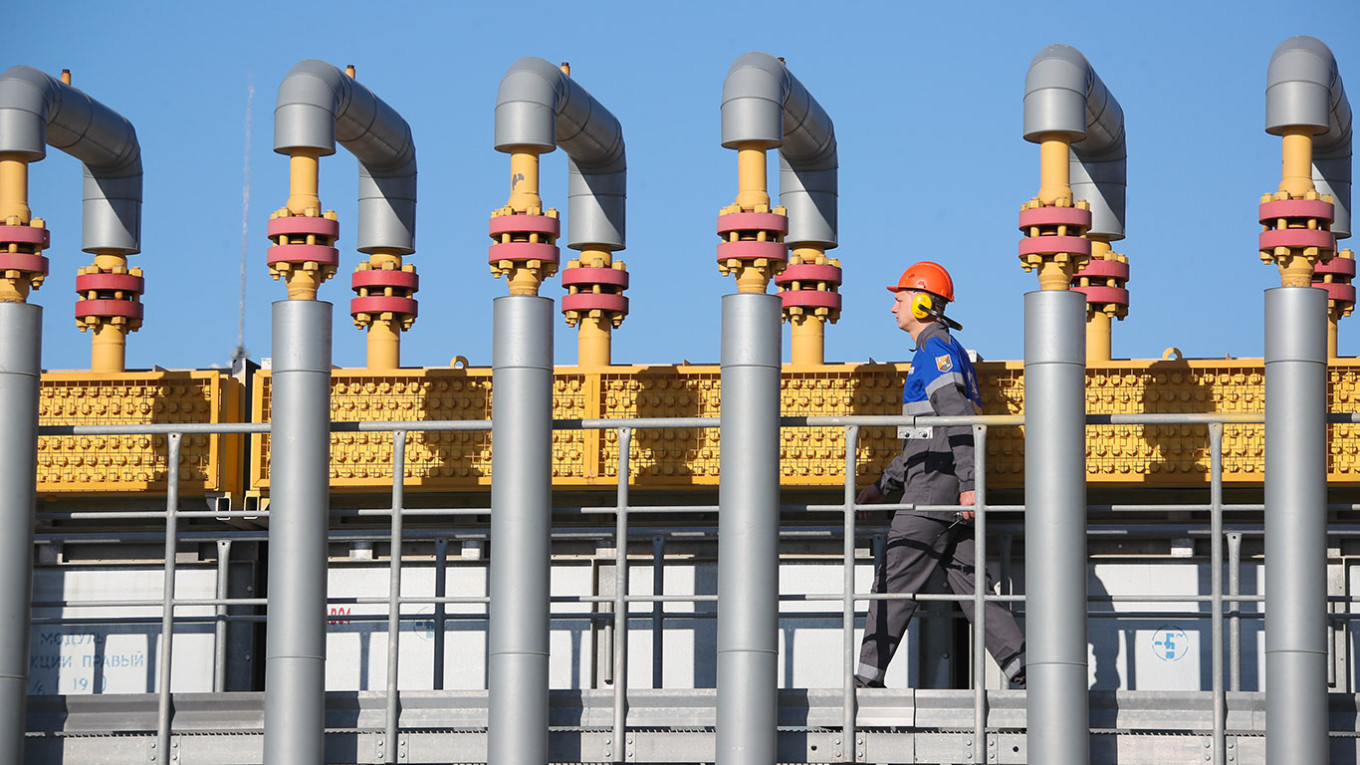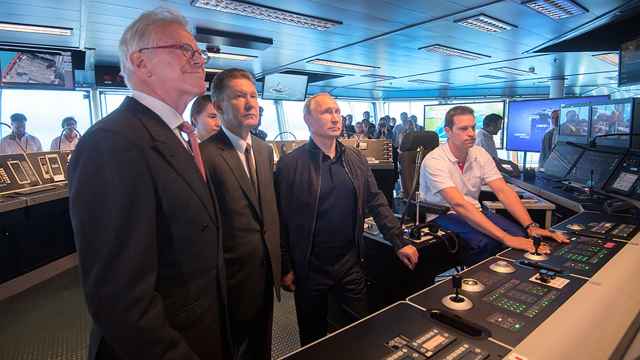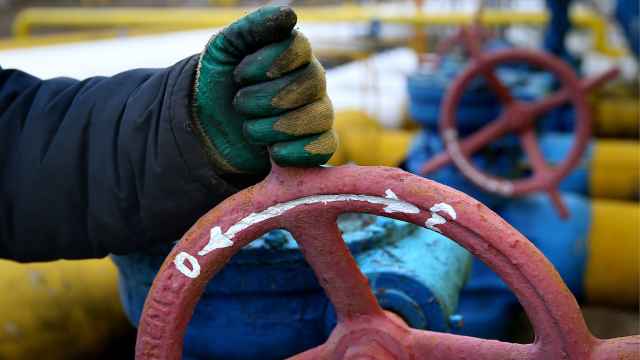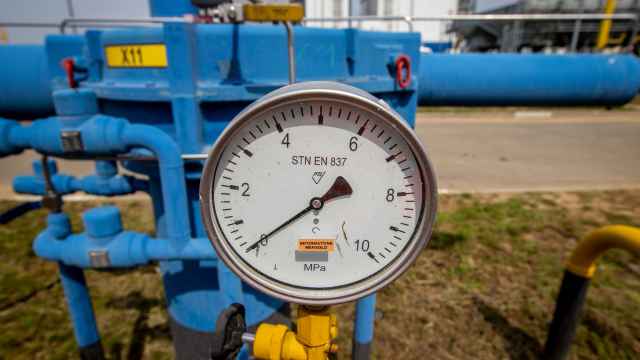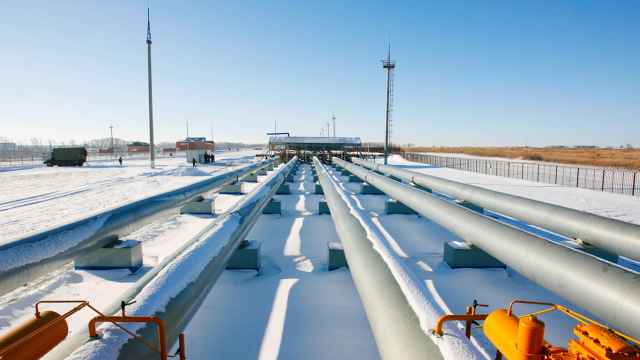Russian gas supplies to Europe via the TurkStream gas pipeline set a new record last week, according to data from the European Network of Gas Transmission System Operators (ENTSOG), the state-run TASS news agency reported Wednesday.
Gas flows through the TurkStream pipeline reached a record weekly level between Feb. 3 and 9, with over 390 million cubic meters (mcm) pumped through the Strandzha-2 compressor station on the Turkish-Bulgarian border. This marks the highest weekly delivery since the pipeline's launch in January 2020, surpassing the previous record of 376 mcm set between Jan. 13 and 19.
The pipeline also set a new daily supply record, peaking at 56.7 mcm on Monday, breaking previous highs several times throughout the week.
Since Ukraine shut down its transit of Russian gas to Europe on Jan. 1, TurkStream has become the only route delivering Russian gas to European markets. Last year Ukraine transmitted some 15 billion cubic meters (bcm) of gas to the EU, a supply that has now stopped, increasing the pressure on Europe to find a new source of gas to replace this gas.
In addition, a cold winter means that EU gas tanks have been emptying faster than normal and the EU will have to find an additional 10bcm to replace the excess gas used this winter to power industry and heat homes.
The shortfall has already sent prices of gas up and led to talk of restarting the damaged Nord Stream 1 and 2 pipelines. Of the four strands of the two pipelines, one was not damaged by the explosions in September 2022 and is still full of technical gas. That strand could be turned on again tomorrow and has a capacity of 25bcm — exactly the amount of missing gas that Europe needs.
Since the beginning of the heating season, the EU has already withdrawn more than half of the accumulated winter fuel reserves, totaling 53.2 bcm. The last season of gas withdrawal from European underground storage facilities ended on March 31, 2024, with a record 58.44% of reserves still in place.
Gas prices rising
Gas prices hit a two-year high this week, rising above $620 per thousand cubic meters as Europe braces for freezing weather. The EU’s gas reserves in underground storage facilities in Europe dropped below 50% this week, according to Gas Infrastructure Europe (GIE), while the rate of withdrawal in February was almost 60% higher than in 2024.
Rising demand and a shortage of supply have been made worse as Asia starts hoarding gas in anticipation of harsh tariffs imposed by the Trump administration.
Goldman Sachs has revised its forecast for Title Transfer Facility (TTF) gas prices for the summer of 2025, increasing the projection to $580 per kcm (€50 per megawatt-hour) from the previous estimate of $464 per kcm (€40 per MWh).
"A combination of weather-driven demand and disappointing supply has significantly tightened the gas balance in Europe," the bank's analysts said in their report. "As a result, we believe the region will need to attract additional LNG imports this year to manage gas inventories to comfortable levels ahead of next winter."
Goldman Sachs maintains its forecasts for 2026 and 2027 at $278 per kcm (€36 per MWh) and $253 per kcm (€24 per MWh), respectively.
Goldman Sachs also highlighted the higher-than-expected LNG demand in Asia this year and said it could push TTF prices to the upper bound of the fuel-switching range, currently near $975 per kcm (€84 per MWh). Conversely, a potential peace agreement between Russia and Ukraine could lead to increased flows of Russian gas to Europe and lower prices.
If Russian flows through Ukraine were to return to pre-war levels, TTF prices for summer 2025 could fall to between $232 per kcm (€20 per MWh) and $349 per kcm (€30 per MWh), depending on how early in the year pipeline exports commence.
As of Jan. 23, European natural gas prices have stabilized at approximately $580 per kcm, near a three-week high, as markets balance mixed signals about supply and demand.
In November 2024, Goldman Sachs had previously revised its 2025 TTF price forecast upward to $464 per kcm (€40 per MWh), compared with $395 per kcm (€34 per MWh) previously, citing similar concerns over supply and demand dynamics.
TurkStream hits monthly records
The TurkStream pipeline transports Russian gas to Turkey and southern and southeastern Europe via the Black Sea. It has a total annual capacity of 31.5 billion bcm, of which about half goes to Turkey, which does not have its own storage facilities. The pipeline originates from the Russkaya compressor station near Anapa on Russia’s Black Sea coast.
According to ENTSOG data cited by TASS, TurkStream gas deliveries to Europe hit a monthly record of 1.56 bcm in January. In 2024, total transportation via the route increased 23% y/y, reaching 16.7 bcm, with Hungary receiving a record 7.6 bcm of this supply.
Hungary, a key recipient of TurkStream gas, received assurances from Brussels on Jan. 27 that the EU would seek to restore Ukraine’s transit of Russian gas, prevent disruptions to Russian oil deliveries via the Druzhba pipeline, and protect the TurkStream infrastructure from attacks.
In return, Budapest agreed to extend EU sectoral sanctions against Russia for another six months beyond Jan. 31. Hungary has consistently opposed efforts to reduce Russian energy imports, citing concerns over its energy security.
Talks are also underway between Baku and Kyiv on the possibility of connecting the gas fields in Azerbaijan to Europe via Ukraine’s pipeline network to increase the supplies of gas.
In 2025, Gazprom will export 38 bcm to China, about 25 bcm to Turkey and 15 bcm to Europe via the TurkStream pipeline across the Black Sea. The 15 bcm that Gazprom has lost due to the suspension of Ukrainian transit would therefore have made up about 16% of this export portfolio: a noticeable but not fundamental volume.
This article first appeared in bne IntelliNews.
A Message from The Moscow Times:
Dear readers,
We are facing unprecedented challenges. Russia's Prosecutor General's Office has designated The Moscow Times as an "undesirable" organization, criminalizing our work and putting our staff at risk of prosecution. This follows our earlier unjust labeling as a "foreign agent."
These actions are direct attempts to silence independent journalism in Russia. The authorities claim our work "discredits the decisions of the Russian leadership." We see things differently: we strive to provide accurate, unbiased reporting on Russia.
We, the journalists of The Moscow Times, refuse to be silenced. But to continue our work, we need your help.
Your support, no matter how small, makes a world of difference. If you can, please support us monthly starting from just $2. It's quick to set up, and every contribution makes a significant impact.
By supporting The Moscow Times, you're defending open, independent journalism in the face of repression. Thank you for standing with us.
Remind me later.


